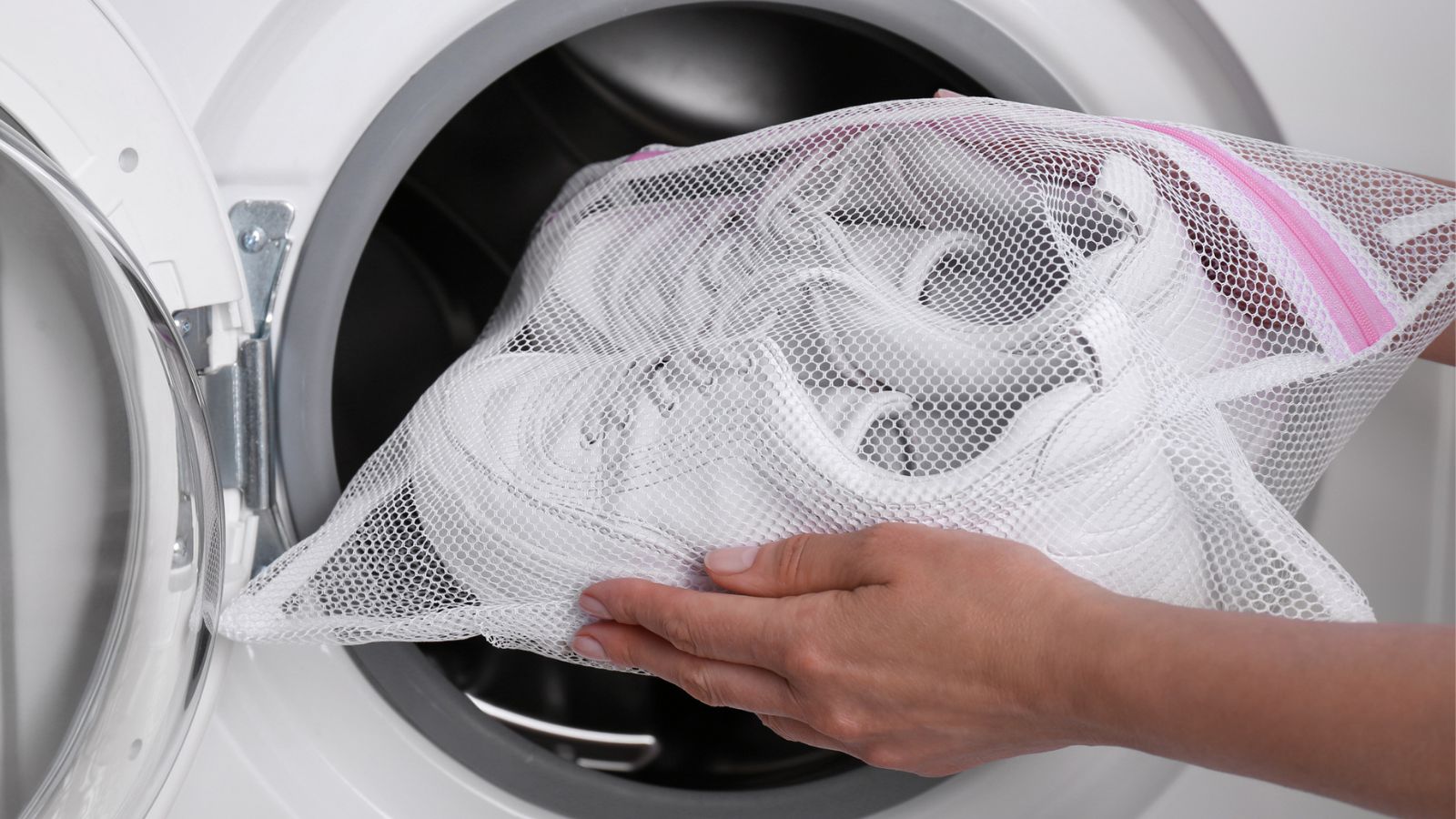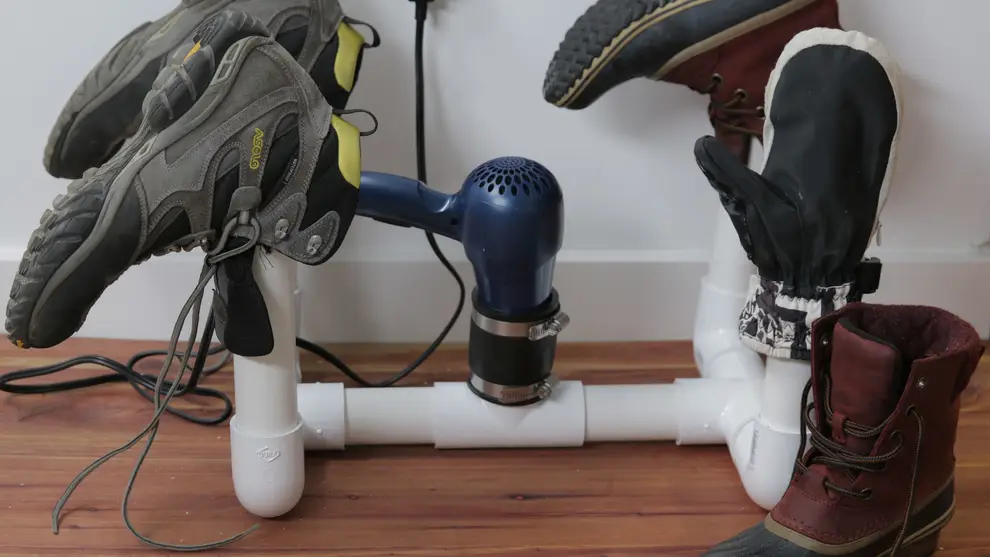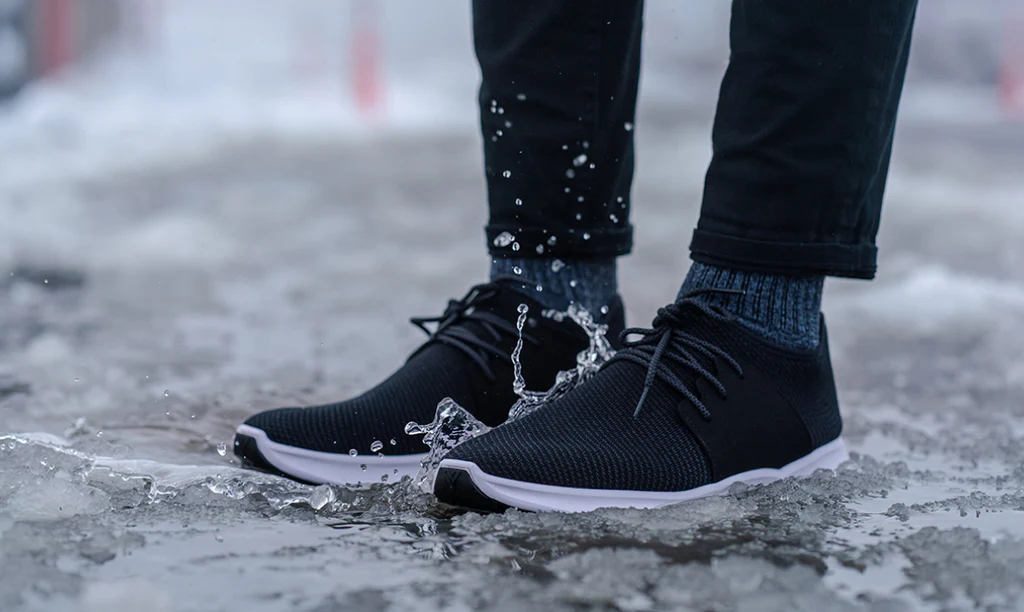How to Dry Shoes After Washing without Damaging Them
Everyone likes it when he/she puts on clean shoes on! But what should you do after washing your best sneakers? The next step is just as crucial as the washing itself: drying! As much as we are aware that washing shoes can be a very daunting task, we also realize that people might not know how to dry washed shoes without making them damp and soggy. No problem, we are here to help you (or should we say support your feet?).
Below, we have gathered useful pieces of advice to help your Vessi shoes, or any other pair for that matter, look and feel like new again. Let's start now!
How Long Do Shoes Take to Dry?
As for the shoe drying, having a general rule in this regard is impossible. Taking the time that the pair of shoes requires to dry depends on the shoe material used and the relative air humidity level. Of course, the type of drying you apply always plays a very crucial role in the process.

Image Source: shoewash.ca
Expect to require at least:
-
20 minutes if you use a clothes dryer
-
2 hours if you use rice
-
2-3 hours if you use a fan
-
8 hours if you use newspapers
-
3 hours if you use a shoe dryer
Method 1: Using a Clothes Dryer
Each pair of shoes is unique, so before putting your shoes in the dryer, it’s advised to check the shoe label for explicit instructions on dryer use. In the shoe tongue, if you see a square with a circle in the middle, then you can put the shoes in the dryer. If you see a square with a dot, then you can place the shoes in the dryer with low heat. On the other hand, if you see a square with an “X”, then the shoes should not be dried in the dryer.

Image Source: homesandgardens.com
If there is no label, assume the shoes aren't dryer-safe and use other methods to dry them.
Step 1: Loosen the laces and remove the insoles
Ensure the shoes are not tightly laced so that you can easily have a space to work with. However, if the insoles are separable, then it is recommended to detach them and take them to another area for them to dry.
Step 2: Fill the shoes with cloth towels or socks
It will be useful to fill these shoes with these materials in order to minimize the time that the fabric shoes will spend in the dryer and to avoid shrinkage of the shoes. You can also add some towels and socks into the dryer; this will help in absorption of excess water so as to mute the noise, in case the shoes become loose and jiggle.
Step 3: Hang your shoes inside the dryer
First, take one end of the shoelace and form a loop with it, then take the other end of the shoelace and form another loop with it, and the two ends should be tied together. Then open the dryer door, while holding your shoes using the laces, and place the soles pressed on the inside of the door. Make sure they are hanging and close the dryer door.
Step 4: Run the dryer for 20 minutes
Choose the air-dry setting if your washing machine has such available at your disposal. If not, select the lowest temperature to avoid heat damage, fading, shrinkage, or wear on the garment. If the shoes are still damp, continue to dry it in the dryer for another 20 minutes before checking it again.
Method 2: Using Uncooked Rice

Image Source: tips-and-tricks.co
Step 1: Remove the insoles and shoe laces
When washing the shoes, remove the laces and insoles, and once washed, ensure that they are placed in a region with good air circulation. But if there is enough space in the box of rice, they should put them next to the shoes.
Step 2: Cover the bottom of a box with 2.5 cm (1 inch) of dry, uncooked rice
Ensure you identify a storage basket or a shoe box that is large enough to accommodate the shoes. Furthermore, the box should have a cover for the effectiveness of rice in removing moisture from shoes due to its ability to absorb moisture.
Step 3: Put your wet shoes open-side down in the box
Pour some rice into the shoes and wiggle it through the inner part to allow for thorough drying. Afterwards, they turn them over and fill them up with more rice until they are fully immersed.
Step 4: Close the box tightly and wait for 2 hours
Let it remain there for two hours for the rice grains to soak up moisture from the shoes. After 2 hours, check them out. If they are still damp, then simply wait more time will be needed to dry all the components completely. Pour out the rice in the box and replace it with a new portion of dried grains to decrease the drying time.
Method 3: Using a Fan

Image Source: factoryoutlet.asia
Step 1: Remove the shoe laces and insoles
Take out the laces and the insoles, and leave them to dry in a room with proper ventilation. Or else, you can hang them somewhere that they do not entangle such as over a shower curtain rod or a clothes hanger.
Step 2: Look for a standing/table fan
Look for a strong fan taller than your shoes and use it. To dry your shoes, hang them on the fan.
Step 3: Set the fan to medium or high
Run the fan for another 2-3 hrs or when all the shoes are thoroughly dry. After that, one shall replace the laces and insoles, and prepare for an adventurous journey.
Method 4: Using Newspaper

Image Source: wikihow.com
Step 1: Look for a newspaper and remove pages with a lot of coloured ink
Use the pages with less or no photos that concentrate a lot of ink in one spot. Pages with photos may leak ink onto your white or leather shoes, especially since they are wet.
Step 2: Remove laces and insoles
Take out the laces and the insoles, and let the shoes dry in an open area with proper ventilation but not under direct sunlight. Apart from this, you should hang the laces and the insoles on a drying rack as you would do to wet clothing.
Step 3: Roll up the newspaper pages and put them in the shoes
Continue to fill the shoes as much as possible by placing small crumpled papers in the toe boxes and packing it with more papers.
Step 4: Wrap the wet shoes in newspaper pages
Take two to three layers of the newspaper and roll it and your shoes as tight as you can in order to soak more water. Tie the newspapers together with rubber bands.
Step 5: Put the wrapped shoes on a well-ventilated area
Ideally, the countertop or tabletop should be in a room filled with fresh and natural light, or it can be a shady terrace during a breezy day.
Step 6: Check and replace the wet pages after every 2-3 hours
To speed up the drying process, we suggest that you replace any of the pages that have a wet feeling with new ones. If you allow wet pages to rest in your shoes, it will take much more time. Curing may require 30 minutes or a few hours of drying time.
Method 5: Using a Shoe Dryer

Image Source: jlcatj.gob.mx
Step 1: Rub your shoes as dry as possible with a cloth
Dry your shoes with a cloth or paper towel so that the inside will be dry when you put your feet back inside your shoes. This will assist in reducing the time taken for the shoes to dry by a shotgun method. It will also assist in eliminating the issue of water dripping, which is helpful since most shoe dryers are electrical.
Step 2: Place your shoes on the shoe dryer and turn it on
Place the shoe inverted and tap it gently on one of the high towers which are attached to the base of the machine. Next, turn on the shoe dryer and wait while the machine does its work.
Remember that most shoe dryers tend to warm the towers for drying shoes through convection or circulate hot air through shoes.
Step 3: Check your shoes after 3 hours
Most shoe dryers usually have timers to prevent fire hazards caused by overheating. The duration of the timer is different but not more than three hours. Finally, if you find that the shoes still contain moisture after three hours, remove them from the shoe tree, and place them in the shoe dryer for further air-drying. On the other hand, one can wait until the shoe dryer cools and then reuse the dryer until the shoes are thoroughly dry.
Step 4: Apply leather cream to your shoes (If Applicable)
The heat from a shoe dryer can affect the texture of shoes mostly if they are made of leather thereby making it hard and stiff, thereafter we suggest to apply leather conditioner (especially if it is used on leather shoes) using a clean fabric. This will cause the shoes to return to their original comfort and feel.
What Are the Tips to Keep Your Shoes Dry Inside and Out

Image Source: vessi.com
1. Wear waterproof shoes
As for our Vessi shoes, you do not have to wait for the forecast before stepping out because they are 100% waterproof. Yes, you heard me! Farewell to the pain and soreness, welcome dry feet and comfy shoes with Vessi waterproof shoes.
We craft our shoes to keep your feet dry and comfortable, no matter the weather. And luckily, they come in different varieties. We have Vessi Everyday Sneakers, Vessi Weekend Sneakers, Vessi Cityscape Sneakers, and Kid's Waterproof Sneakers, to mention a few. No matter the weather, you will always look stylish.
2. Wear breathable shoes
One would consider Vessi sneakers among the top brands that come with the feature of breathability. These shoes have been crafted with a patented knit material with an inner layer where the heat and sweat can be expelled to allow breathability as well as excluding every other element.
Do you know what's cool? Our waterproof shoes are not only insusceptible to water but also allow perspiration. No more feeling of claustrophobia with your fingers cramped inside the shoes.
3. Avoid wearing shoes in inclement weather
If you haven’t gotten a pair of our waterproof shoes, it is best not to wear your shoes in the rain or snow if they are not waterproof. It is always better to prevent than to cure, so make sure you always cover your feet with waterproof shoes!
4. Waterproof your shoes
Here's the deal: to make shoes waterproof, just grab some waterproof shoe spray and follow the instructions on the can. Keep in mind - if you waterproof your shoes, it might affect their breathability a bit. It's a small price to pay for keeping your feet dry and comfy!
Check out the best waterproof shoes for everyday use to save you from all this trouble.




